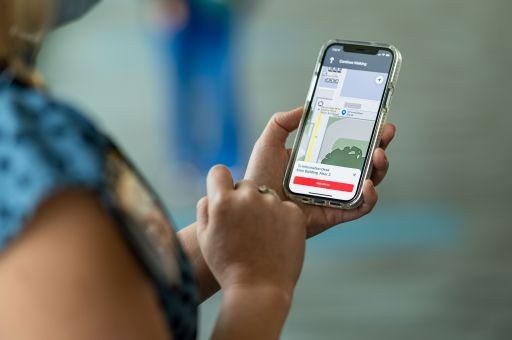Directions

MD Anderson’s previous wayfinding site (Access.MDAnderson.org) has been replaced by the new MD Anderson Directions App.
We have tools and people to help you find your way at MD Anderson. Pathways, landmarks, signage, maps and the MD Anderson Directions mobile app help guide you to and around our large campuses.
Download the new MD Anderson Directions app to find your way to all MD Anderson locations. The mobile app is available through the Apple App Store and Google Play Store. Be sure to allow the mobile app access to your device’s Bluetooth and location in your settings.
Using the app:
- Patient appointment reminders and MyChart schedules have location information and links to the Directions app. Once downloaded, you can launch the Directions app from your appointment reminders.
- You’ll see driving directions to MD Anderson’s buildings and the nearest parking facility to your appointment.
- The mobile app offers turn-by-turn navigation of buildings on our Texas Medical Center Campus.
- For our locations outside of the Texas Medical Center, the app will offer turn-by-turn directions to get patients to the nearest parking option and offer points of interest within their location.
- When you open the app, you can use the Locations button on the bottom menu to search for your destination and easily find any patient room, clinic or resource.
- A parking reminder is available when parking at the Mays Clinic garage.
- From the Directions app, you can access MyChart, MDAnderson.org and ground shuttle information.
Need help finding your way?
You can always ask an employee with an ID badge or a volunteer wearing a blue jacket to ask for directions. Staffed information centers are located at primary public building entry points at the Texas Medical Center and most of our locations.
request an appointment online.
Help #EndCancer
Give Now
Donate Blood
Our patients depend on blood and platelet donations.
Shop MD Anderson
Show your support for our mission through branded merchandise.
